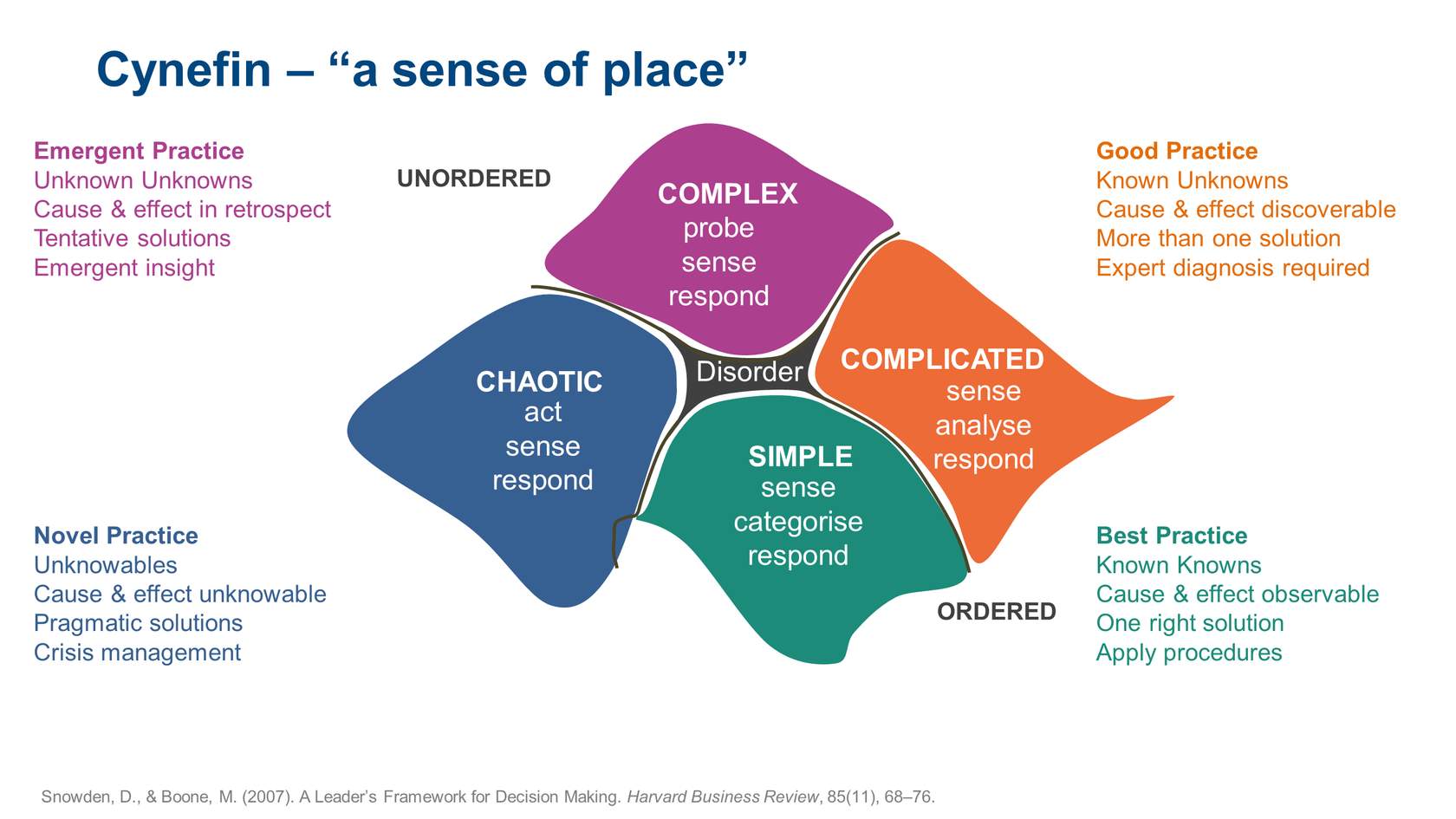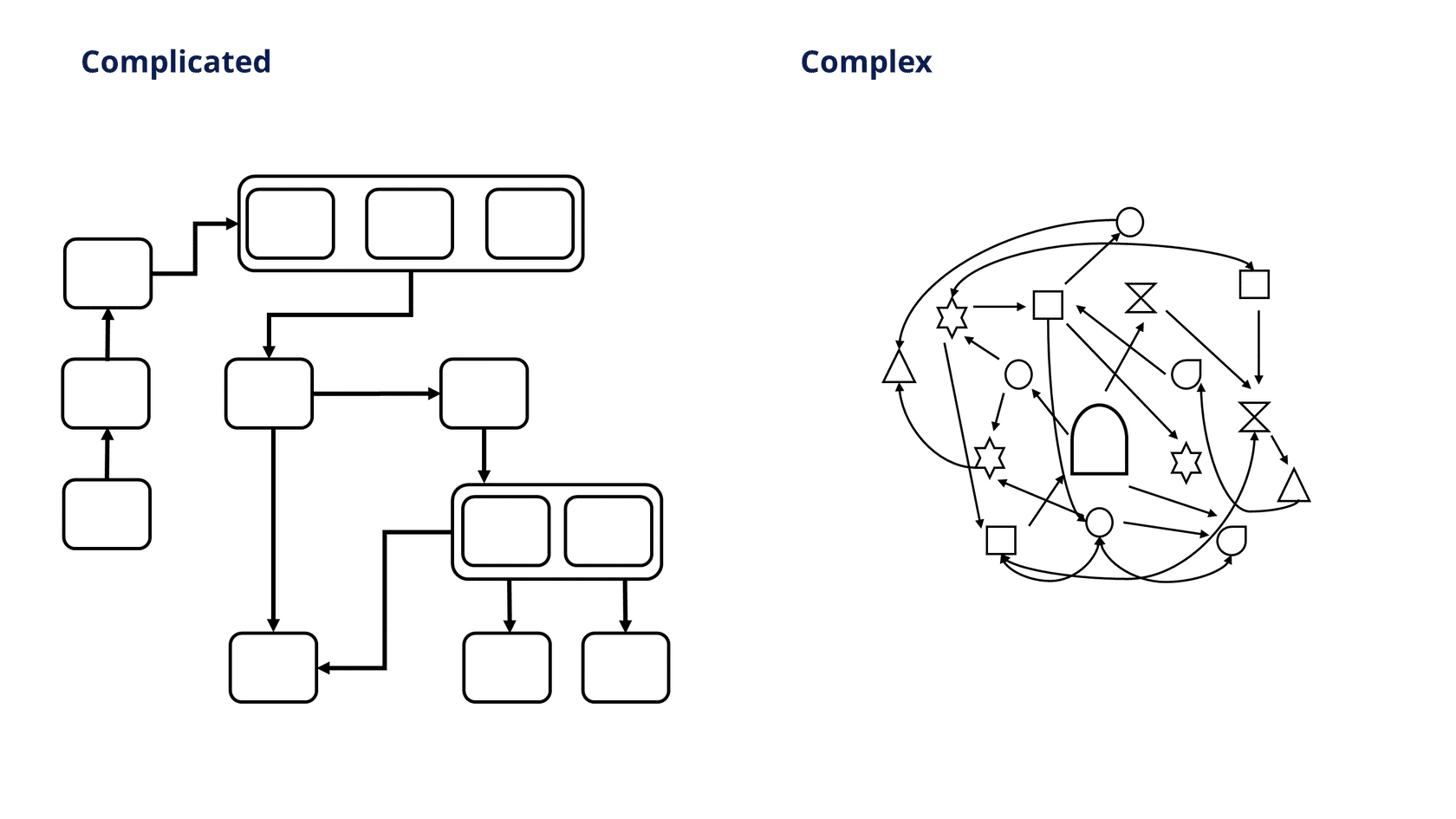13 The Cynefin Framework Framing Problems and Decisions
The Cynefin Framework Framing Problems and Decisions
You have just spent some time engaging in a serious play activity. You worked to solve a problem that you wanted to overcome in your workplace.
Let’s hope it was successful. At the least you now have a new technique to use when you need to focus on a specific issue.
We want you to investigate more thoroughly the nature of a problem. You as much as anyone know that problems are not created equal. David Snowden of The Cognitive Edge has spent many years developing the concept of The Cynefin Framework1 which is a problem and decision-framing approach. You may have seen this concept in some of your other units. This complexity-framing model is one of the key thinking models that we use at QUT. If you have used it already keep going as each time you approach a new issue or problem with The Cynefin Framework, it is likely that you will learn something new.
Understanding yourself and the Army’s context, and its operating environment is a highly complex task. Decisions must be made with less than perfect knowledge, especially with technical and battlefield dynamics disrupting long held assumptions. David Snowden proposes a decision framework for decision makers and those in the field.
To set started, watch the YouTube video (below). As you watch, here are some things to keep in mind and things to look out for:
Snowden reminds us that when we are confronted with situations when we need to decide and act, we will interpret the situation and act according to our personal preferences for action.
- Consider where in the decision framework you tend to operate. What kinds of problems are you usually faced with?
- Note how you respond to each of the quadrants and think about how you see problems and potential solutions.
- Listen carefully for the nuances about each space and be careful about the ‘cliff space’ between Simple and Chaotic. The template below will help you with this.

Reflection activity
Consider your observations and reactions in the context of your current, and perhaps, past situations of decisions making, actions and outcomes.
How does the framework add to your understanding of how you, your teams and the Army overall see and make decisions?
How might you use this complexity decision framework in your own work?
Think about your own view of the world. What is your default approach to issues and decision situations?
Think about how you might share with your immediate team your insights and preferences.
How might you deal with these in your work context? What impact will your preferences
and those of others, have on the outcomes?
To sum up, Snowden says The Cynefin Framework “gives us a very easy way of deciding how to work but it (also) gives us a divergent (way of thinking) – we sometimes call this requisite applicability. It basically says dependent on which space you’re in, you should think differently, should analyze differently, rather than one-size-fits-all which has been a tradition of management theory”.2
Here is a final word that might help you put this lesson in context and get us ready for the next lesson. The famous American General Stanley McChrystal3 discusses complicated and complex in detail. He represents the differences in this way:

Adapted from: McChrystal, S. C., Tantum; Silverman, David; Fussel, Chris. (2015). Team of Teams: New Rules of Engagement for a Complex World. Portfolio Penguin.
He says that complexity occurs when the number of interactions between components increases dramatically. His wrap-up statement is that the world has become in many ways less predictable despite technology and data-gathering and mining advances.
References
- Snowden, D. J., & Boone, M. E. (2007). A leader’s framework for decision making. Harvard business review, 85(11), 68.
- Ibid.
- McChrystal, S. C., Tantum; Silverman, David; Fussel, Chris. (2015). Team of Teams: New Rules of Engagement for a Complex World. Portfolio Penguin.

